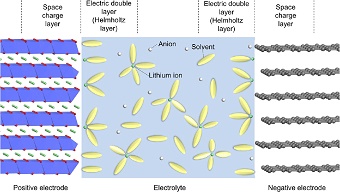Volume 68, Issue 2
Special Feature : Recent Trends in Research Methods and Technologies in Thin Film and Surface Physics
Displaying 1-21 of 21 articles from this issue
- |<
- <
- 1
- >
- >|
Preface
-
Article type: Preface
2025Volume 68Issue 2 Pages 57-58
Published: February 10, 2025
Released on J-STAGE: February 10, 2025
Download PDF (356K)
Special Feature : Recent Trends in Research Methods and Technologies in Thin Film and Surface Physics
-
Article type: Introduction
2025Volume 68Issue 2 Pages 59
Published: February 10, 2025
Released on J-STAGE: February 10, 2025
Download PDF (206K) -
Article type: Current Topics
2025Volume 68Issue 2 Pages 60-65
Published: February 10, 2025
Released on J-STAGE: February 10, 2025
Download PDF (3194K) -
Article type: Current Topics
2025Volume 68Issue 2 Pages 66-70
Published: February 10, 2025
Released on J-STAGE: February 10, 2025
Download PDF (3232K) -
 Article type: Current Topics
Article type: Current Topics
2025Volume 68Issue 2 Pages 71-76
Published: February 10, 2025
Released on J-STAGE: February 10, 2025
Download PDF (2708K) -
Article type: Current Topics
2025Volume 68Issue 2 Pages 77-84
Published: February 10, 2025
Released on J-STAGE: February 10, 2025
Download PDF (867K) -
Article type: Current Topics
2025Volume 68Issue 2 Pages 85-90
Published: February 10, 2025
Released on J-STAGE: February 10, 2025
Download PDF (12388K) -
Article type: Current Topics
2025Volume 68Issue 2 Pages 91-96
Published: February 10, 2025
Released on J-STAGE: February 10, 2025
Download PDF (4522K) -
Article type: Current Topics
2025Volume 68Issue 2 Pages 97-104
Published: February 10, 2025
Released on J-STAGE: February 10, 2025
Download PDF (8530K)
Report
Conference Report
-
Article type: Report
2025Volume 68Issue 2 Pages 105
Published: February 10, 2025
Released on J-STAGE: February 10, 2025
Download PDF (810K) -
Article type: Report
2025Volume 68Issue 2 Pages 106
Published: February 10, 2025
Released on J-STAGE: February 10, 2025
Download PDF (873K)
Science Café
Award winner
-
Article type: Science Café
2025Volume 68Issue 2 Pages 107
Published: February 10, 2025
Released on J-STAGE: February 10, 2025
Download PDF (371K) -
Article type: Science Café
2025Volume 68Issue 2 Pages 108
Published: February 10, 2025
Released on J-STAGE: February 10, 2025
Download PDF (503K) -
Article type: Science Café
2025Volume 68Issue 2 Pages 109
Published: February 10, 2025
Released on J-STAGE: February 10, 2025
Download PDF (366K) -
Article type: Science Café
2025Volume 68Issue 2 Pages 110
Published: February 10, 2025
Released on J-STAGE: February 10, 2025
Download PDF (384K) -
Article type: Science Café
2025Volume 68Issue 2 Pages 111
Published: February 10, 2025
Released on J-STAGE: February 10, 2025
Download PDF (441K)
Research Abroad
-
Article type: Science Café
2025Volume 68Issue 2 Pages 112-114
Published: February 10, 2025
Released on J-STAGE: February 10, 2025
Download PDF (484K) -
Article type: Science Café
2025Volume 68Issue 2 Pages 115-116
Published: February 10, 2025
Released on J-STAGE: February 10, 2025
Download PDF (476K) -
Article type: Science Café
2025Volume 68Issue 2 Pages 117-118
Published: February 10, 2025
Released on J-STAGE: February 10, 2025
Download PDF (1388K)
Memorial
-
Article type: Science Café
2025Volume 68Issue 2 Pages 119
Published: February 10, 2025
Released on J-STAGE: February 10, 2025
Download PDF (598K)
News & Trends
-
Article type: News & Trends
2025Volume 68Issue 2 Pages 120
Published: February 10, 2025
Released on J-STAGE: February 10, 2025
Download PDF (311K)
- |<
- <
- 1
- >
- >|







